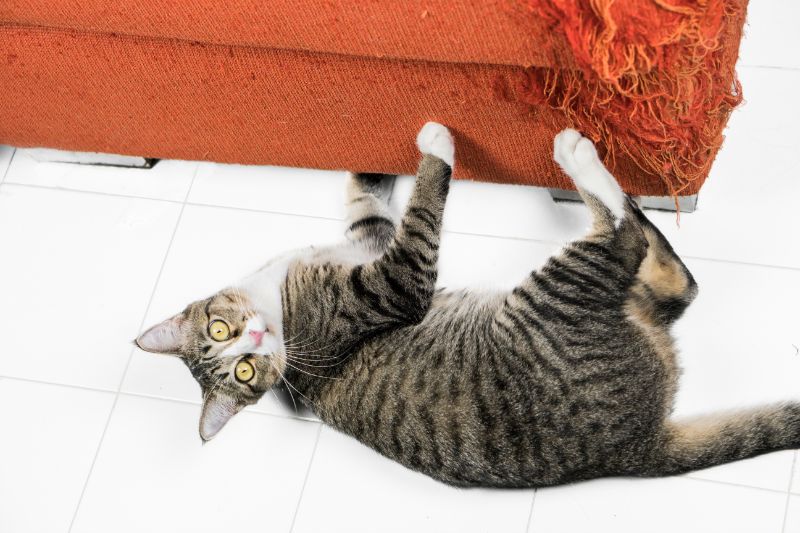Real or Not? Separation Anxiety in Cats

Separation anxiety is a common behavioral problem in dogs. At Rocklin Ranch Veterinary Hospital we have coached many dog owners through training techniques, outlined crate acclimation, and even prescribed medications to combat separation anxiety.
But surely this problem affects cats, too?
Despite their often confident demeanor and rap for being loners, separation anxiety in cats is a real phenomenon and one that perhaps often goes undiagnosed. With a little awareness, though, we can help these stressed, anxious kitties as well.
Recognizing Trouble
You may think of your cat as a solitary individual, but if you stop to consider it you will likely realize that your pet is a pretty social creature. Many cats develop strong bonds with the people and other animals they live among.
When we talk about separation anxiety in pets, we are referring to an emotional response from them brought about by a separation from the person or animal that they have a bond with. This may occur when you are gone for a prolonged period, such as on a vacation or a full workday or sometimes even with shorter outings like a trip to the store. Schedule changes can also bring on separation anxiety.
In the canine crew, separation anxiety is often hallmarked by howling, tearing things up, and sometimes urinating or defecating even though house-trained. Cats, as with so many other things, are often more subtle.
Signs of separation anxiety in cats may include:
- Increase in anxiety as person prepares to leave the home
- Excessive vocalization
- Urinating or defecating in odd areas, often on personal items
- Vomiting
- Changes in eating habits
- Grooming excessively
- Destroying objects
- Obvious excitement upon reunion
Dealing with Separation Anxiety in Cats
If you think that your cat may be suffering from separation anxiety, the first step is to make an appointment to see us. Many other things can cause inappropriate urination, increased vocalizations, vomiting, changes in eating habits, or increased grooming. We need to be sure that there is not an underlying physical illness before assuming a behavioral cause.
Once we have determined that your cat is healthy, we can get to work. Separation anxiety in cats can be combated with strategies to modify behavior and decrease the stress associated with your absence.
Planning playtime – A set schedule helps most cats. Be sure to schedule a predictable 10-15 minute session of quality time into your day. Limit play and other social activities about 20 minutes before you leave home so the transition is less dramatic.
Enriching the environment – Making the environment fun and stimulating even in your absence is key. Ditch the food bowls in favor of puzzle feeders and treat dispensers. Rotate toys, put up a bird feeder in front of the window, and add vertical climbing spaces to your home.
Changing your tune – Be sure to avoid making a big deal of leaving or returning. Slip out quietly while kitty is eating or playing and return without a lot of fanfare. Notice what actions trigger an anxious response in your cat. If, every time you pick up your keys, Tiger starts meowing, do it over and over until that action gets less of a response.
Take help – There are many products and services that exist that can help you combat this problem in your cat. Using pheromone products like Feliway can be helpful for some cats. Consider a pet sitter to stop by and interact with your cat when you are away. In situations where basic behavioral modifications are not enough, you may even need to work with our doctors to utilize anxiety-reducing medications.
Cats are just as much a part of our family and home as are dogs, and separation anxiety in cats is a real thing. Despite their tough exterior, our feline friends really do love us. It is our job to recognize signs of anxiety and reduce their stress. After all, that’s what friends are for.

